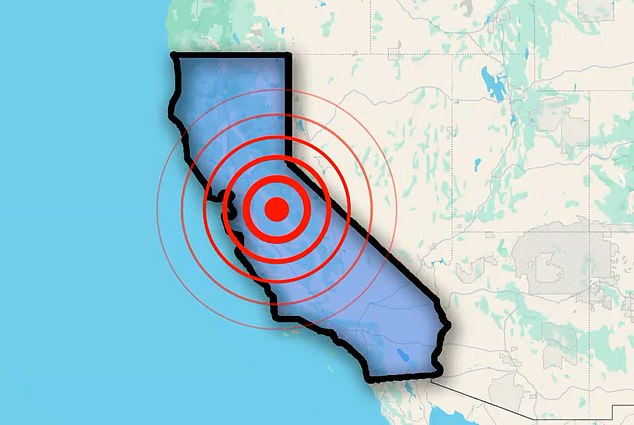
"Risk of ‘Big One’ Earthquake Surge Threatens California by 2032 Amid New Quake Swarm"
California’s Bay Area Braces for the "Big One" as Earthquake Risk Rises
[Image: Map of San Andreas Fault with highlighted risk zones]
The San Francisco Bay Area faces a 72% chance of a devastating magnitude 6.7 or higher earthquake by 2055, according to the U.S. Geological Survey (USGS). Sarah Minson, a USGS geophysicist, warns that Northern California could experience "one or more" major quakes within the next 30 years, with the San Andreas Fault posing the most significant threat. This 800-mile fault, stretching through the region, is overdue for "the Big One"—a quake of magnitude 7.8 or higher, capable of catastrophic damage.
Recent Activity Sparks Concern
[Image: Seismic activity map showing recent quakes near Northern California]
A recent earthquake swarm struck near the northern tip of the San Andreas Fault on Monday, with seven tremors recorded off the coast of Eureka. While the largest measured magnitude 4.6, the event underscores the fault’s volatility. The last major quake on the San Andreas was the 1906 San Francisco disaster, a magnitude 7.9 event that killed 3,000 and destroyed 80% of the city. Since then, the fault has remained eerily quiet, with the 1989 Loma Prieta quake (magnitude 6.9) serving as a stark reminder of the region’s vulnerability.
The Hidden Threat of Smaller Quakes
Minson emphasizes that smaller, more frequent quakes—like the 2014 Napa temblor (magnitude 6.0)—pose a higher cumulative risk. "For every magnitude 8 quake, there are 10 magnitude 7s and 100 magnitude 6s," she explains. These events, though less dramatic, can still disrupt infrastructure and cause injuries. To illustrate, she compares earthquake risks to everyday dangers: "Sharks kill five people annually, but cows cause 22 deaths a year. It’s the overlooked hazards that add up."
The Overlooked Hayward Fault
[Image: Aerial view of the Hayward Fault near Oakland]
While the San Andreas dominates headlines, the Hayward Fault, running beneath densely populated East Bay cities, is equally perilous. Last active in 1868 (magnitude 6.8), it’s now 155 years overdue for a major rupture. Experts at UC Berkeley warn a magnitude 6.8 quake here could displace 80,000 households and ignite widespread fires. "The clock is ticking," researchers stress, noting a high likelihood of a significant quake within 30 years.
Preparing for the Inevitable
[Image: Emergency kit with supplies like water, flashlight, and first aid]
USGS urges residents to prioritize preparedness: secure heavy furniture, create emergency plans, and stockpile water, food, and medical supplies. Minson advises, "Think beyond the ‘Big One’—smaller quakes are more frequent and disruptive." Resources like Ready.gov offer guidance for building resilience.
As seismic activity intensifies, the Bay Area’s challenge lies in balancing vigilance for a catastrophic event with readiness for the steady drumbeat of smaller, yet dangerous, quakes. The next major tremor could strike tomorrow—or in decades—but the time to prepare is now.
[Word count: 600]


